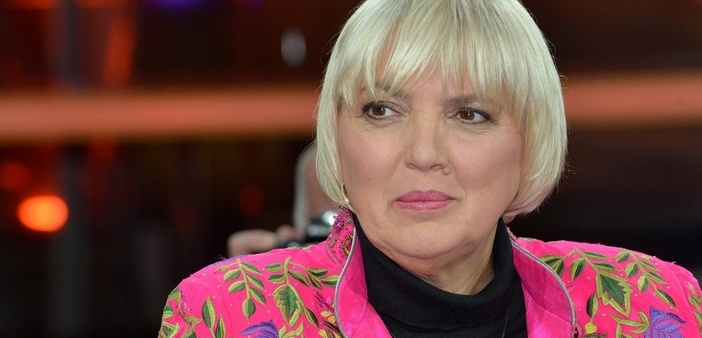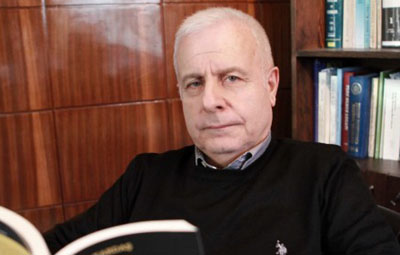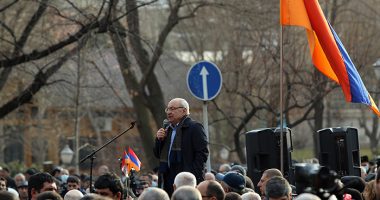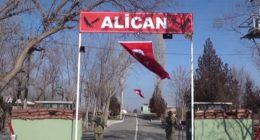An estimated 700-percent increase in the number of Armenian Internet users since 2009 is changing the way Armenians lobby for social change and protest perceived abuses of power, some media observers say. Others contend, however, that the YouTube and Facebook revolution remains in its infancy, with state-controlled television still dominating the public discourse.
The effects of Armenia’s Internet usage explosion have already been seen this year: several cell-phone videos posted on YouTube prompted unprecedented investigations into physical abuse of soldiers within the army and of teachers’ use of violence against students in public schools.
“The Internet’s influence is growing larger with the increase in the number of Internet users,” commented Gegham Vardanian, an online producer at Internews, a media support non-governmental organization.
Internet World Stats, a portal for international Internet access statistics, claims that Armenia’s number of Internet users has increased by 700 percent since 2009. Some 47.1 percent of Armenia’s population of almost 3 million is now online, according to the Public Services Regulatory Commission. By comparison, just 6.4 percent of Armenia’s 2009 population was estimated to have Internet access. Armenia currently holds the highest Internet access rate in the South Caucasus, just ahead of Azerbaijan at 44.4 percent of the population, and far outpacing Georgia’s 28.3 percent of the population.
Lower-priced Internet service packages offered by Armenia’s three main cell phone companies (Vivacell-MTS, Armentel-Beeline and Orange Armenia) appear to be encouraging growth. Prices for 126 kilobytes/second and 256 kilobytes/second now range on average between 6,000 and 9,000 drams (about $16.50 – $25) per month – a noticeable decrease from a few years ago when Internet access was not widely affordable.
One of the more active non-governmental organizations in online media development in Armenia, the Open Society Foundation-Armenia, has underwritten a project to try and enable cell phones to display and use Armenian-language fonts. Conceivably, the option could accelerate the spread of cell-phone-based Internet usage. [The Open Society Foundation-Armenia is part of the Open Society Foundations network. EurasiaNet.org operates under the auspices of the Open Society Institute, a separate part of the foundations network.]
If Internet usage rates are even “maintained, we’ll have a situation when people sitting in front of their PCs at home are able to initiate huge changes in the country,” predicted Edgar Arakelian, who oversees a 3,300-member-strong Facebook campaign against opening foreign-language schools.
Two sets of YouTube videos have already illustrated the potential for using the Internet to promote reforms.
In September, a cell-phone video entitled “The Real Face of the Army” that showed a drunken army officer pulling soldiers’ ears, hitting them in the face and pouring water on their heads kicked off a series of video postings that documented the physical abuse of Armenian soldiers.
Defense Minister Seyran Ohanian at first declared that he did not believe that such an incident could happen in the Armenian army. Within a few days, however, as popular outrage at the videos increased, a criminal case was filed against the offending officer.
Soon afterwards, two videos appeared on YouTube, shot by students, showing Yerevan public school teachers hitting and yelling at students. Within several hours of the videos’ publication, the teachers in question had resigned. The schools’ principals received official reprimands.
Vardanian, the Internews producer, said the incidents show that reform-minded citizens are discovering the power of the Internet to mobilize support for struggles against individuals and institutions that traditionally have proven resistant to change. “The latest developments create the impression that the Internet fight is more effective in terms of establishment of civil society and protection of rights than any other options,” commented artist Diana Galstian.
The local head of one international media advocacy organization notes that the social network revolution is not just the domain of disgruntled citizens. After the bloody crackdown on opposition protests against the 2008 presidential election results, the government took note of the change as well, commented Media Diversity Institute Director Arthur Papian.
With media restrictions in place post-crackdown, “it became apparent for everybody that social networks and video websites can basically replace” traditional media, Papian said. “So, the state, as well as the mass media understood the power of social media, which have appeared now in the focus of their attention.”
Civil society activist Izabella Sargsian, a blogger for more than a decade, believes that Armenia is no different from other countries that have turned to social networks like YouTube and Facebook as a way to overcome problems with freedom of speech. “Social networks have a great role, but we cannot say that the Internet can compete with TV in terms of influence,” Sargsian said.
Political PR consultant Armen Badalian believes that the uproar created by the YouTube videos had less to do with ordinary Armenians’ Internet usage and more to do with traditional media taking advantage of these online tools. “It’s not the influence of the Internet that is great; rather the [mainstream] media makes this influence large,” said Badalian, in reference to traditional broadcast media.
By themselves, such videos do not prove conclusively that the Internet is providing a significant boost to civil society development in Armenia, commented blogger Sargsian. While the YouTube videos are “indeed positive,” she said, “it’s not a total victory.”
Marianna Grigoryan is the founder and editor-in-chief of MediaLab.am.











